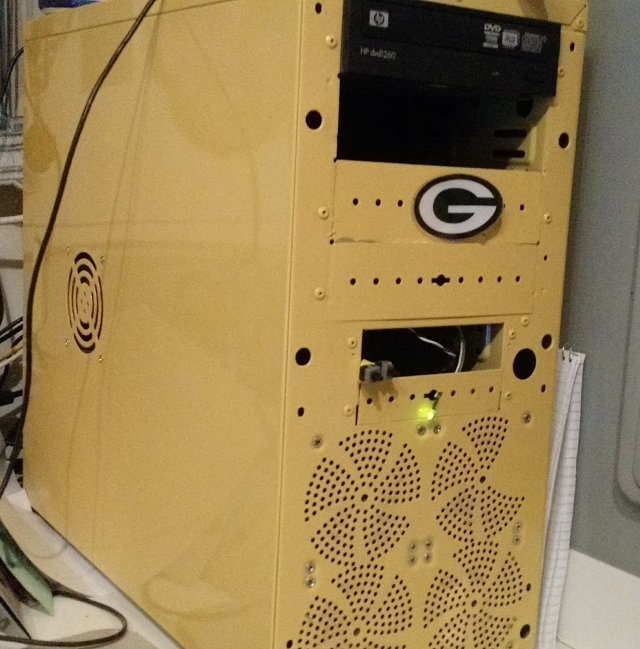* * * * * * * * * * * * * * * * * : Computer Parts : * * * * * * * * * * * * * * * * *


 HACKING GAMES
https://hackerwarehouse.com/product/control-alt-hack/
http://cias.utsa.edu/gaming.php
HACKING GAMES
https://hackerwarehouse.com/product/control-alt-hack/
http://cias.utsa.edu/gaming.php
$39 - ZOTAC NVIDIA GeForce GT 610 Synergy Edition 2GB GDDR3 VGA/DVI/HDMI PCI-Express Video Card ZT-60601-10L
$157- Mushkin Enhanced Blackline 16GB (2 x 8GB) DDR3 UDIMM 2133 (PC3 17000) 997125F
$94 - AMD FX 4350 Unlocked Quad Core Processor 4.2 4 FD4350FRHKBOX, Black Edition
$76 - ASUS ATX DDR3 2133 AMD AM3+ Motherboard M5A97 PLUS
$65 - Thermaltake Smart Standard 750W 80 PLUS Bronze ATX12V 2.3 Power Supply SP-750P
$160 - Samsung 850 EVO 500GB 2.5-Inch SATA III Internal SSD (MZ-75E500B/AM)
https://github.com/raspberrypilearning/
git config --list
git config --global user.username
Clone a repo:
git clone https://github.com/craigcoleman/craigcoleman.github.io.git
Change it...
Then push it.
$git add -all
$git commit -m "change all 181128"
$git push
Newton's Laws of Motion:
Newton's first law of motion is often stated as
An object at rest stays at rest and an object in
motion stays in motion with the same speed and in
the same direction unless acted upon by an unbalanced force.
Newton's second law of motion can be formally stated as follows:
The acceleration of an object as produced by a net force is directly
proportional to the magnitude of the net force, in the same direction
as the net force, and inversely proportional to the mass of the object.
This verbal statement can be expressed in equation form as follows:
a = F / m
The above equation is often rearranged to a more familiar form as shown below.
The net force is equated to the product of the mass times the acceleration.
F = m • a
Formally stated, Newton's third law is:
For every action, there is an equal and opposite reaction.
The statement means that in every interaction, there is a pair
of forces acting on the two interacting objects.
The size of the forces on the first object equals the size of the
force on the second object.
The direction of the force on the first object is opposite to the
direction of the force on the second object.
Forces always come in pairs - equal and opposite action-reaction force pairs.
First Law
An object at rest will remain at rest unless acted on by an unbalanced force.
An object in motion continues in motion with the same speed and in the same direction unless acted upon by an unbalanced force.
This law is often called "the law of inertia".
Second Law
Acceleration is produced when a force acts on a mass. The greater the mass (of the object being accelerated) the greater the amount of force needed (to accelerate the object).
What does this mean?
Everyone unconsiously knows the Second Law. Everyone knows that heavier objects require more force to move the same distance as lighter objects.
However, the Second Law gives us an exact relationship between force, mass, and acceleration. It can be expressed as a mathematical equation:
or
FORCE = MASS times ACCELERATION
Third Law
For every action there is an equal and opposite re-action.
What does this mean?
This means that for every force there is a reaction force that is equal in size,
but opposite in direction. That is to say that whenever an object pushes another
object it gets pushed back in the opposite direction equally hard.


 HACKING GAMES
https://hackerwarehouse.com/product/control-alt-hack/
http://cias.utsa.edu/gaming.php
HACKING GAMES
https://hackerwarehouse.com/product/control-alt-hack/
http://cias.utsa.edu/gaming.php